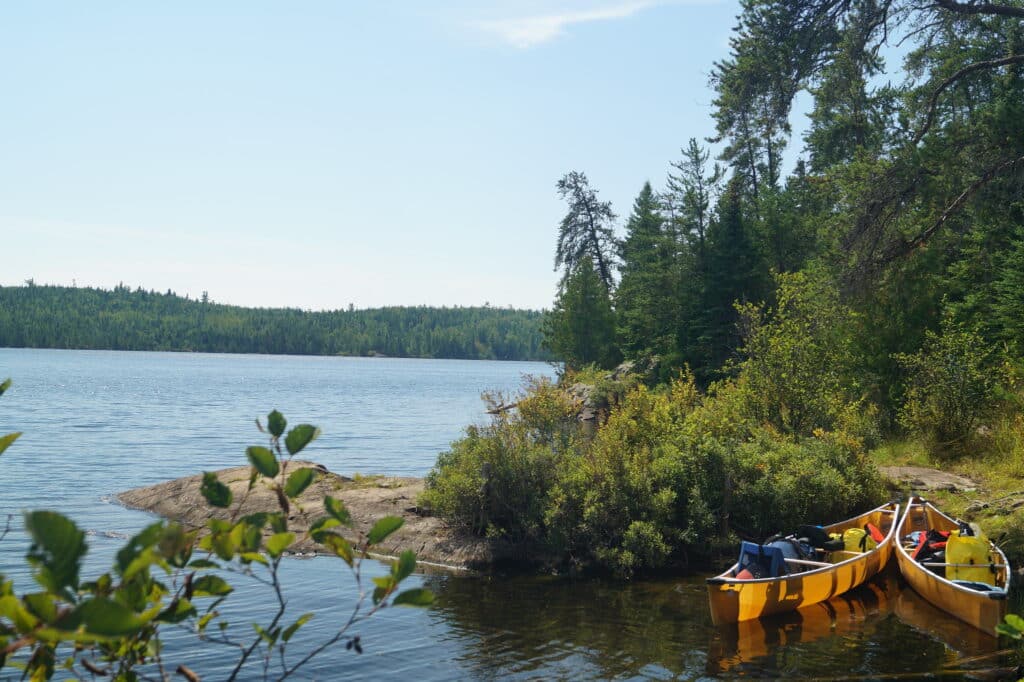
The Superior National Forest released a report this week about how visitors, businesses, interest groups, and others view management of the Boundary Waters Canoe Area Wilderness. The “Situational Assessment Report” was based on interviews with 100 individuals, who represented 66 groups of stakeholders. It was conducted at the Forest Service’s request by the National Center for Environmental Conflict Resolution, a program of the Morris K. Udall and Stewart L. Udall Foundation.
The assessment conversations conducted last fall through this spring covered personal perspectives, communication and education needs, and collaboration between SNF and interested parties. All discussions were confidential.
“We are pleased with the level of involvement that the NCECR was able to obtain for this important assessment,” says Tom Hall, Forest Supervisor for the SNF. “The BWCAW is such a special place with a complex level of management. We look forward to moving into next steps — the development of a collaborative group and working proactively on BWCAW issues.”
Key concerns
Topics brought up by participants as priorities include: visitor use patterns, campsite and trail maintenance, “Leave No Trace” violations, permit system problems, opportunities to experience the BWCAW, motorized and non-motorized use, current and future environmental impacts, and issues outside of the BWCAW that could affect the wilderness.
Based on analysis of the discussions, the report recommends the Superior National Forest create an official collaborative group or other forms of ongoing public engagement to provide a platform for discussion and input.
The Forest Service has not said if any specific issues inspired the decision to enlist help from the Udall Foundation. But in recent years, challenges to the current towboat system, reductions in permit quotas for some entry points, crowding, and Leave No Trace violations have all emerged as important. Many people said they didn’t feel like public perspectives were included in Forest Service decisions.
“There would need to be some way to understand how the information will be used in relation to a decision-making process,” one participant said. “Have some guarantee that the information will at least be utilized. And if it’s not being used, then explain why a different decision was made.”
Report excerpts
“The BWCAW extends nearly 150 miles along the International Boundary, adjacent to Canada’s Quetico and La Verendrye Provincial Parks, is bordered on the west by Voyageurs National Park, and by Grand Portage National Monument to the east. The BWCAW contains over 1,200 miles of canoe routes, 12 hiking trails and over 2,000 designated campsites. Within the last five years (2018-2023), the BWCAW had an annual average of approximately 150,000 visitors.“
Participants share many ideas and responses in the report – a few examples:
- …the BWCAW represents “a place to get away.” It’s a “beautiful place and a great place to disconnect from technology”
- “People should be able to get their permits online because stores are often closed, and people often arrive after work hours”
- …certain campsites, portages, and trails are overused and insufficiently maintained.
- …change in visitor use means “the wilderness ethic is not always adhered to.”
- “Consider real penalties associated with any damage to the BWCAW. Enforce it and create examples of “Leave No Trace” violators.“
- Bears are a big concern near the portages.
- “The BWCAW should be protected from mining and from the aftereffects like contaminated waters”
- “I’m not necessarily 100% opposed to mining but would want to have safeguards to maintain water quality and preservation of wilderness.”
- “SNF could partner with organizations that provide opportunities to BIPOC individuals to share information about how to camp, canoe, and recreate in the BWCAW”
- …the Forest Service has been conveying unclear messaging to the public, such as the BWCAW is “overrun,” it is “difficult to visit,” or when natural disasters happen that the “BWCAW is burned down.”
- “Overall, our communication with Forest Service has been really good and that’s why the reduction in permits was a surprise”
- “At the end of the day, we all want a clean Wilderness that’s accessible to everyone.”
Challenging management issues
The NCECR says its work is not done yet. The group plans to continue working with Superior National Forest leadership to create the collaborative group included in its recommendation.
“The results of the report highlight a wide range of stakeholder interests and views about the Boundary Waters Canoe Area Wilderness and how it is managed,” says Seth Cohen, Senior Program Manager for the NCECR. “Most assessment participants would like to see Superior National Forest explore collaboration opportunities to address challenging management issues. We look forward to continuing to support SNF staff as they consider new opportunities to engage interested parties.”
More information:

